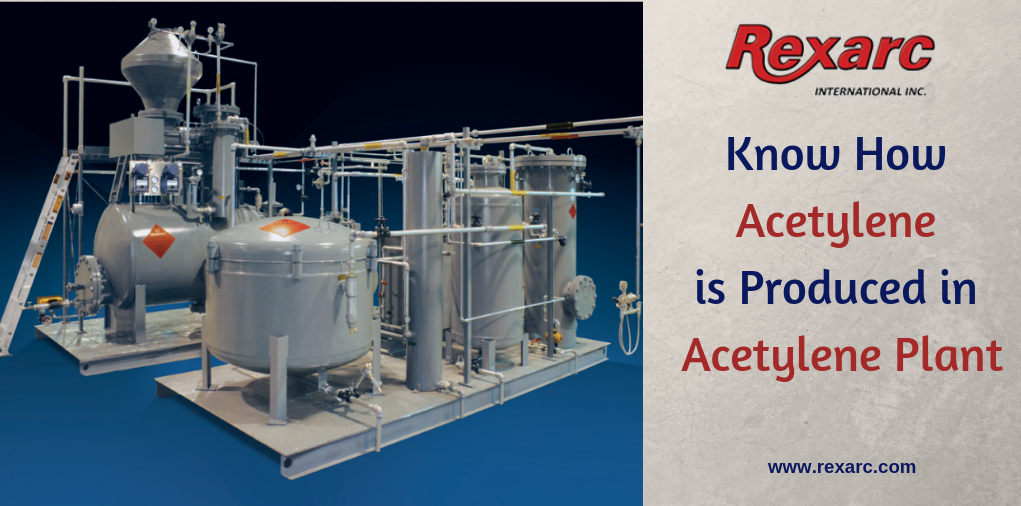Rexarc is currently open from 7:30 AM – 4:00 PM EST, Monday – Friday. Read More
Rexarc is currently open from 7:30 AM – 4:00 PM EST, Monday – Friday. Read More

Acetylene is one of the most popular gases used across industries for oxy-acetylene welding and cutting. It is also used as a raw material for the production of various chemicals such as polyester plastics, polyurethane, and more. Acetylene gas is colorless and odorless when pure. Industrial acetylene has a distinctive odor and is combustible in nature. Today, this gas is produced in large volumes using acetylene gas plants. Are you eager to know its production process? This post discusses the process in detail.
Chemical Reaction and Raw Materials
Acetylene is made of two hydrogen and two carbon atoms and is chemically represented as C2H2. This hydrocarbon is produced by one of two processes— chemical reaction or thermal cracking, using different types of raw materials. Calcium carbide is the most popular raw material used for the commercial production of acetylene. It is created by mixing lime and coke in a blast furnace. The product manufactured is calcium carbide. It is reacted with water to create acetylene gas, and this reaction can be easily formulated as CaC2 + 2H2O → C2H2 + Ca (OH)2. Acetylene, calcium hydroxide and heat are the byproducts of this reaction.
The thermal cracking process, on the other hand, makes use of natural gases, including naphtha, crude oil, bunker C, and more. These gases are subjected to a high temperature for producing acetylene, hydrogen, carbon dioxide, carbon monoxide, and more. Acetylene is separated by dissolving the product in solvents such as anhydrous ammonia, water, acetone, or chilled methanol.
This post focuses only on the production of acetylene in plants using the chemical reaction process.
Detailed Information on the Production of Acetylene in Acetylene Gas Plants
Acetylene plants may vary in design; however, in general, they are equipped with the following components and parts, which play a significant role in acetylene production:
The process begins with the loading of calcium carbide in a cart. Different sizes of calcium carbide are used in the process. Here is the process described in steps:
It is obvious that some of these parts may fail over time, so it is important to replace them with OEM parts. Overall, it is important to source your acetylene gas plants from a reliable acetylene plant manufacturer such as Rexarc. In addition to acetylene gas plants, the company also offers a wide range of components and spare parts for the plants, such as auto-acetone scales, automatic lubricators, carbide hopper fill carts, process skids, automated high-pressure driers, calcium chloride, and more.

We are a one stop shop from custom vessel production to full skidding, plumbing and instrumentation.

We stand by our processes and communicate with you on your project status as much or as little as you would like.

We continually reinvest in our people, business, and equipment technology to ship quality products on time.
